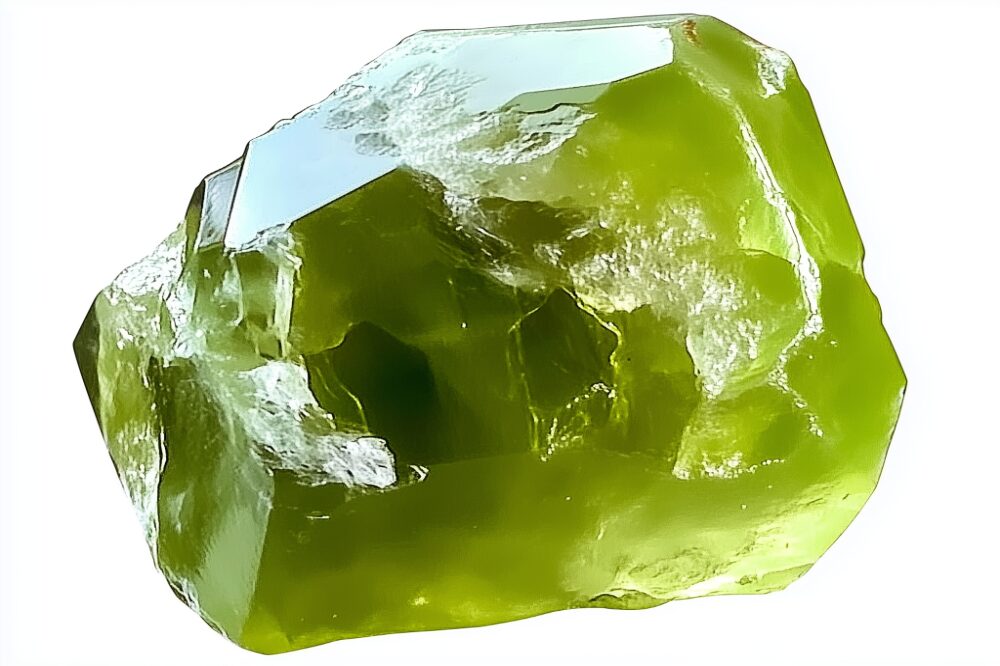Did you know you can find beautiful green gems called peridot right here in Vermont? Even though most people don’t think of Vermont as a place to find gemstones, there are some incredible spots to look.
You can search along the rocky paths of Mount Mansfield or explore the quiet shores of Lake Willoughby. The best part is that you get to enjoy Vermont’s beautiful forests and mountains while you hunt for these sparkly green treasures.
Want to start your own gem hunt? Keep reading to learn about the best places to find peridot in Vermont in 2025 and how to spot these gems like a pro!
How Peridot Forms Here
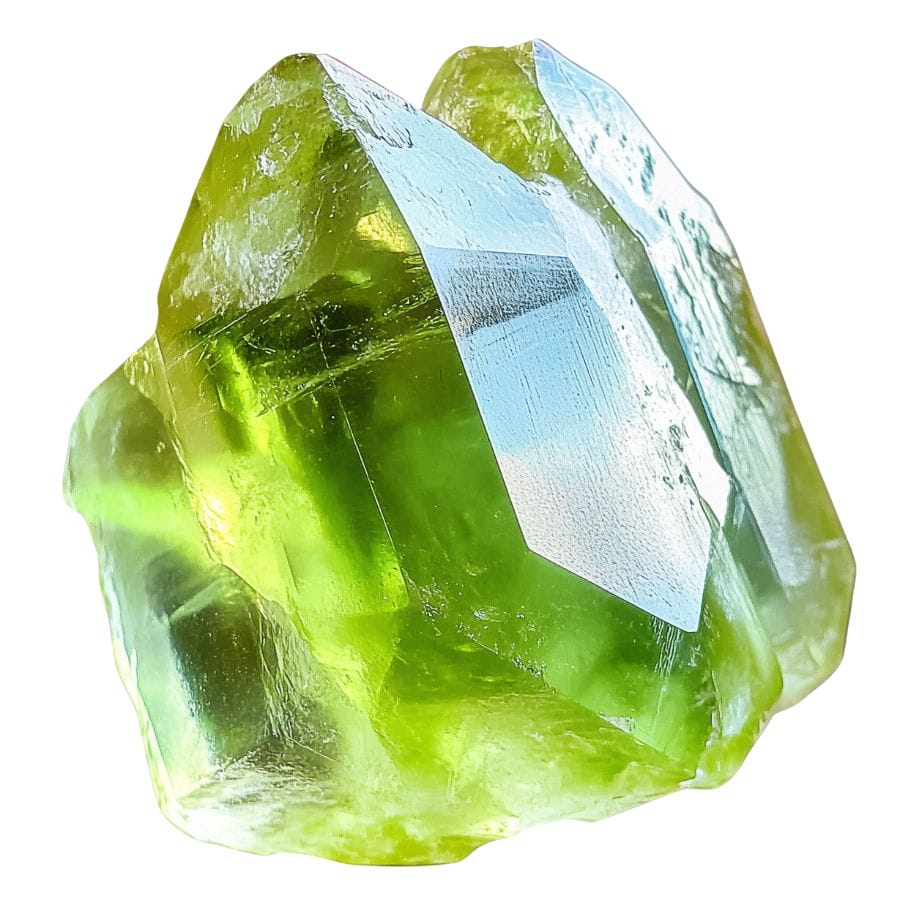
Peridot forms deep within Earth’s mantle, around 20 to 55 miles below the surface, where intense heat and pressure create the perfect conditions. It’s actually made from magma that cools super slowly, letting the crystals grow nice and big.
The main ingredient is olivine, which needs temperatures between 1,000°C to 1,300°C to form properly. When volcanoes erupt, they sometimes bring these green gems up with them in basalt rocks.
What’s really cool is that peridot can also come from meteorites – yep, some of these crystals literally fell from space! The iron and magnesium inside the stone is what gives it that signature olive-green color.
Types of Peridot
Peridot’s value fluctuates based on its origin and quality, with its vivid colors making it a distinctive and sought-after gemstone. Here are the different types of Peridot:
Burmese Peridot
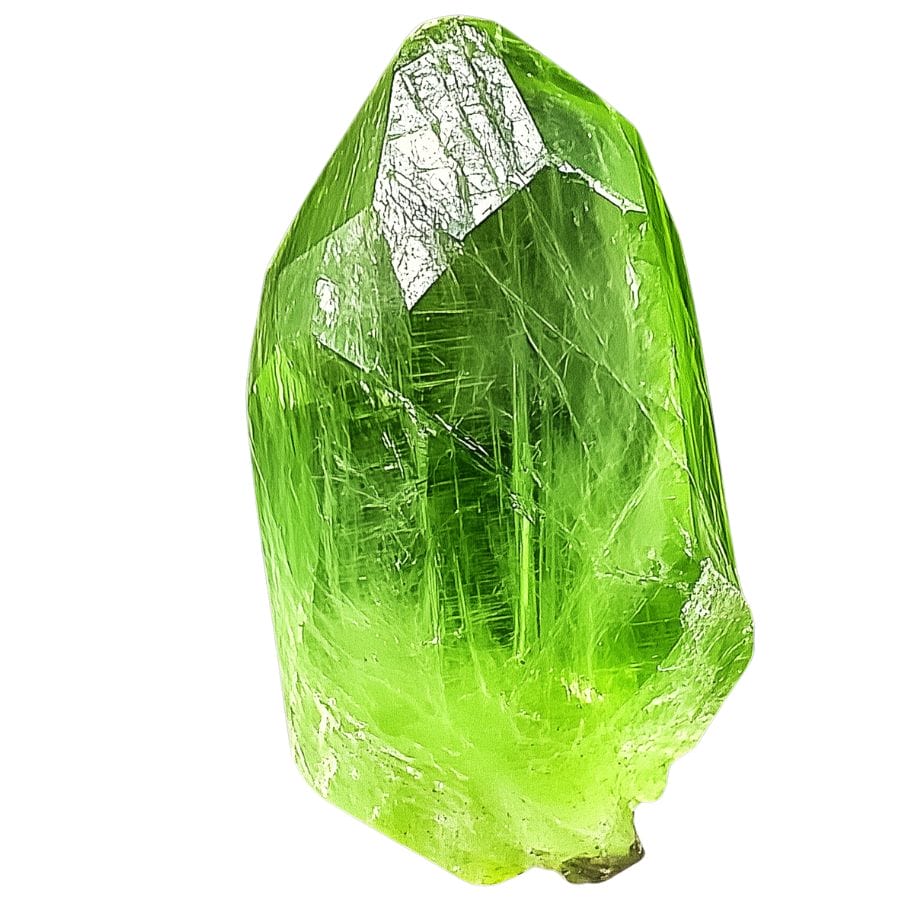
Burmese Peridot shows off a pure, bright green color that looks almost like spring leaves. Most other peridots have brown or yellow mixed in, but Burmese ones usually don’t.
The stone’s special green color comes from the iron inside the crystal. When light hits it, the stone seems to glow from within, creating a beautiful effect that catches everyone’s eye.
These stones often have special markings inside called “lily pads.” These are small, round patterns that look like tiny circles when you look at them with a magnifying glass.
You can often find Burmese Peridot in larger sizes, which makes them great for bigger jewelry pieces. The stones keep their bright color even under different kinds of lighting, so they look good both in sunlight and indoor light.
Pakistani Peridot
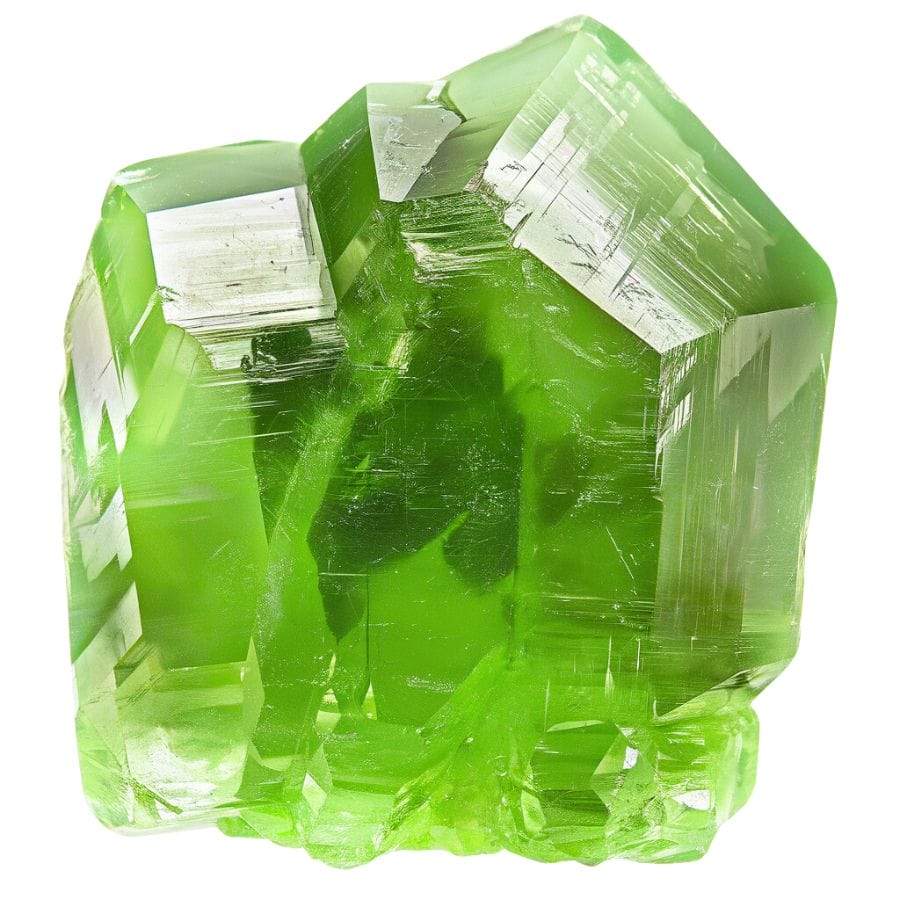
Pakistani Peridot is known for its vibrant green hues, which can range from yellow-green to olive green. The stones are usually very clear and shine beautifully when light hits them.
The stone typically has a vitreous luster and can be quite transparent, showcasing its brilliance. High-quality specimens can exhibit exceptional clarity with minimal inclusions, which enhances their appeal in jewelry.
Inside these stones, you might find tiny bubbles of liquid and gas. These create interesting patterns that make each stone has its unique pattern of these markings.
These peridots often come in larger sizes and maintain their bright color even under artificial light. This makes them look just as good in the evening as they do during the day, which is why some people call them “evening emeralds.”
Arizona Peridot
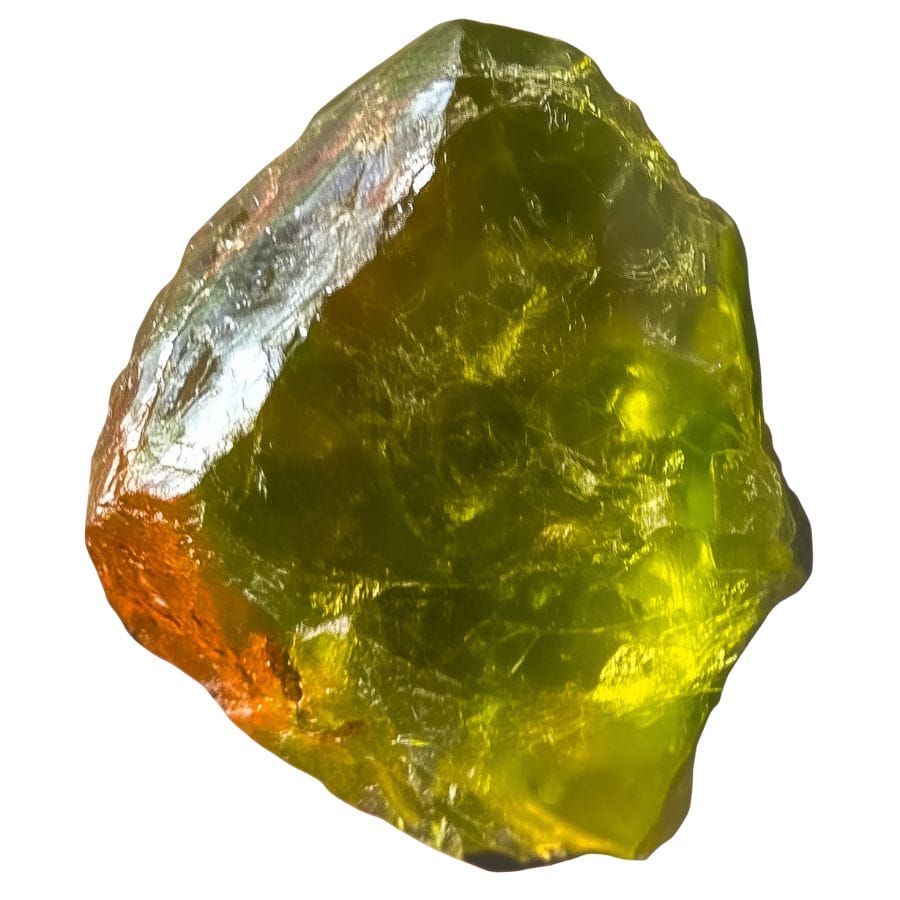
Arizona Peridot shows off a bright, lime-green color that sometimes has olive tones. The stones are usually smaller than other peridots but make up for it with their exceptional brightness and sparkle.
These stones often have a special kind of clarity that makes them appear very clean to the naked eye. When you look at them closely, you might see tiny specks of black minerals inside, which are typical of Arizona stones.
Arizona Peridot is especially famous due to its association with the San Carlos Apache Reservation, which is one of the largest sources of peridot in the world. The region’s peridot is highly valued not only locally but also within the broader gemstone market for its quality and vibrant color.
Changbai Peridot
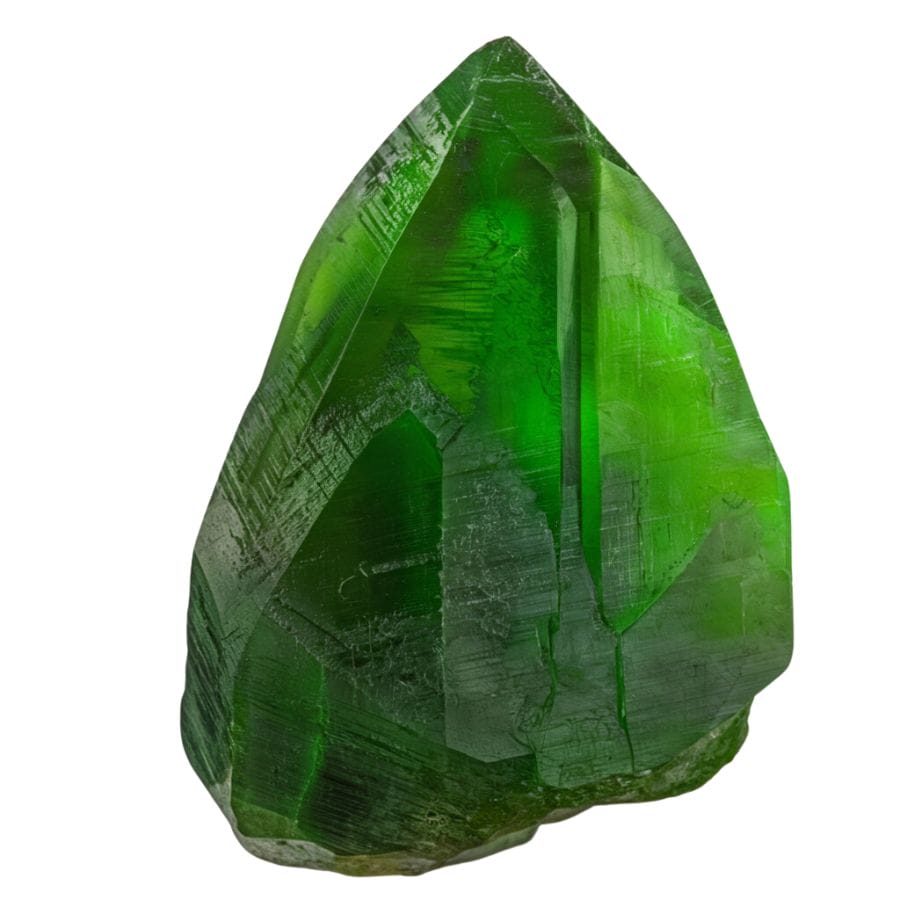
Changbai Peridot displays a deep, rich green color that sets it apart. Their color is more intense than other peridots, showing deep forest green tones.
These stones usually come in medium sizes, around one carat. What makes them special is how clean they look – most have very few internal marks or inclusions. This clarity lets more light pass through, making them especially bright and sparkly.
The color of Changbai Peridot stays consistent throughout the stone. Unlike some other peridots that might show patches of different colors, these maintain their rich green tone evenly. This makes them particularly appealing when set in jewelry.
Their superior clarity and rich color have made them increasingly popular since 2005. Even though they’re newer to the market compared to other peridots, they’ve quickly gained recognition for their outstanding quality.
Vietnam Peridot
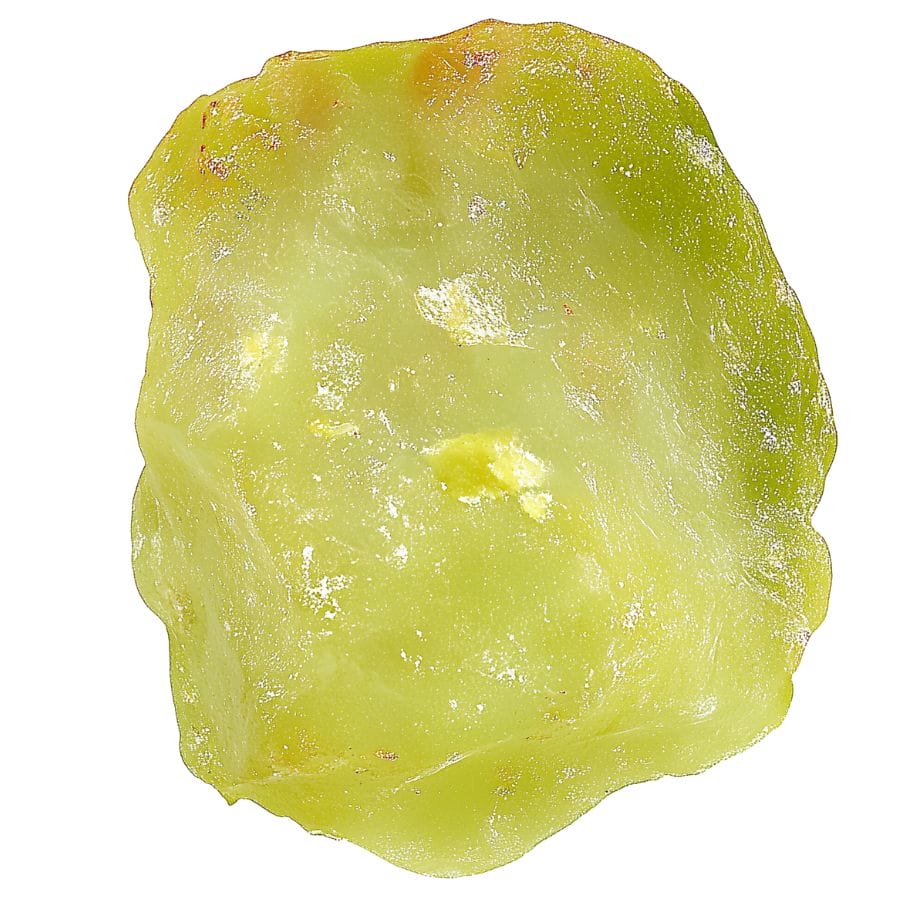
Vietnam Peridot, also known as chrysolite, has a special yellowish-green color that makes it easy to spot. They often come in larger sizes than peridots from other places.
When light passes through these stones, it creates a unique double-image effect. If you look closely at a faceted stone, you might see the edges appear doubled. This effect makes them sparkle in a special way.
Vietnamese peridot is often found in mafic and ultramafic rocks, which are rich in iron and magnesium, leading to the formation of larger and higher-quality stones.
The green color stays even throughout the whole stone. This consistent color is one reason why collectors really like Vietnam Peridot.
Norway Peridot
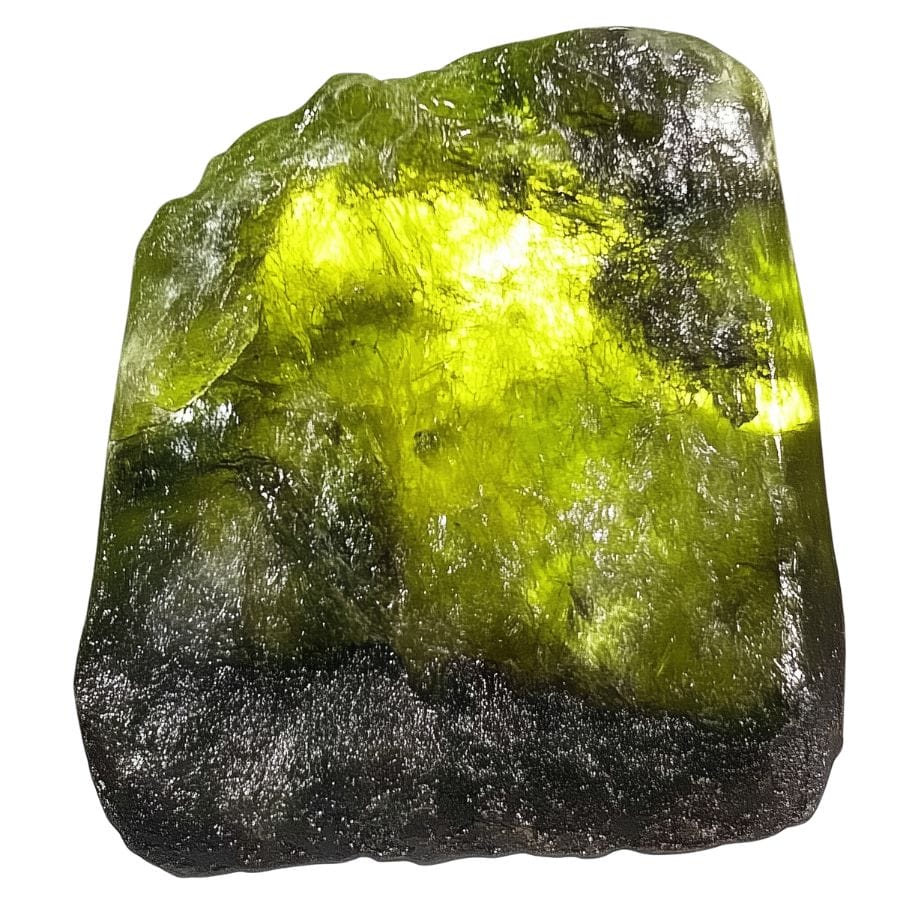
Norway Peridot comes in beautiful olive green shades. The color can range from light yellow-green to deep olive. The amount of iron inside the stone decides how dark or light the green will be.
When light enters these stones, it splits into two beams. This makes the stone look extra sparkly and bright, even when the light isn’t very strong. You can see this special effect best in well-cut stones.
Norway Peridot is part of a long tradition of peridot use in jewelry and artifacts, including significant pieces like those found in the Shrine of the Three Kings in Cologne Cathedral, which were initially thought to be emeralds but were later identified as large peridots.
Pallasite Peridot
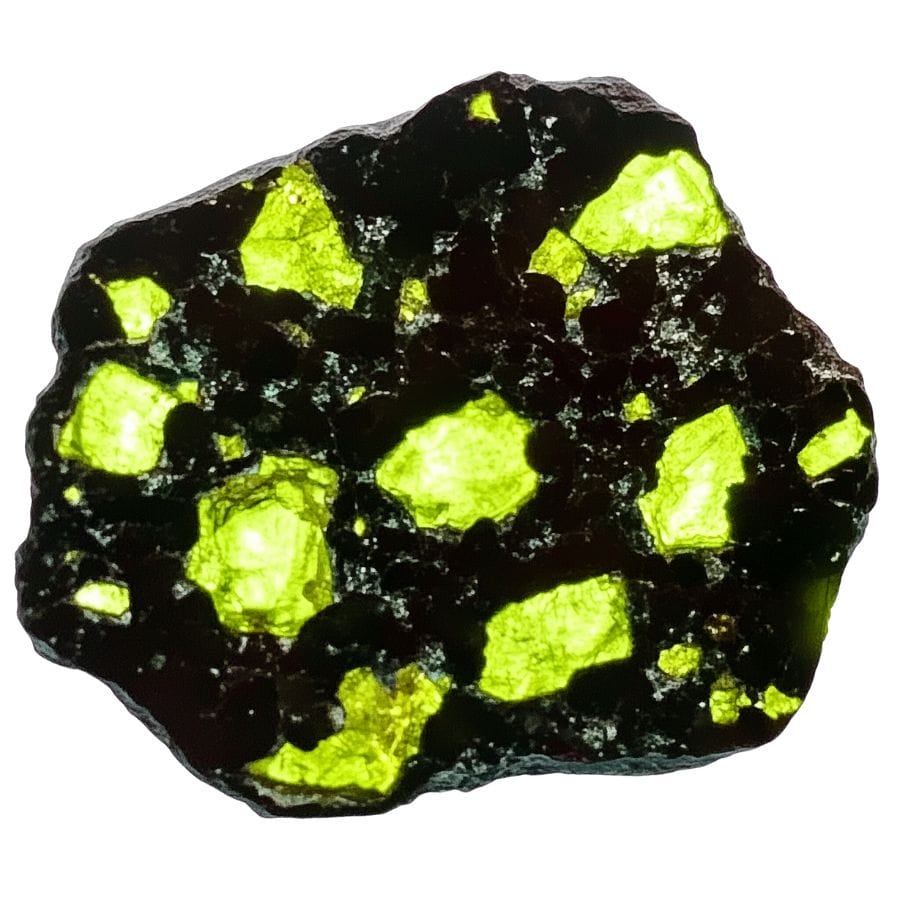
Pallasite Peridot comes from space! These green crystals are found inside meteorites, mixed with metal from space. The green crystals stand out beautifully against the silvery-gray metal background.
These stones form a natural pattern in the meteorite. The mix of bright green crystals and shiny metal creates a beautiful design that looks like stained glass when light shines through it.
Scientists find these stones especially interesting because they tell us about how planets form. The mix of metal and crystal shows us what the inside of planets might look like.
These stones are pretty rare since they only come from meteorites. Collectors really like them because each piece tells a story about space and has its own unique pattern of green crystals.
Antarctica Peridot
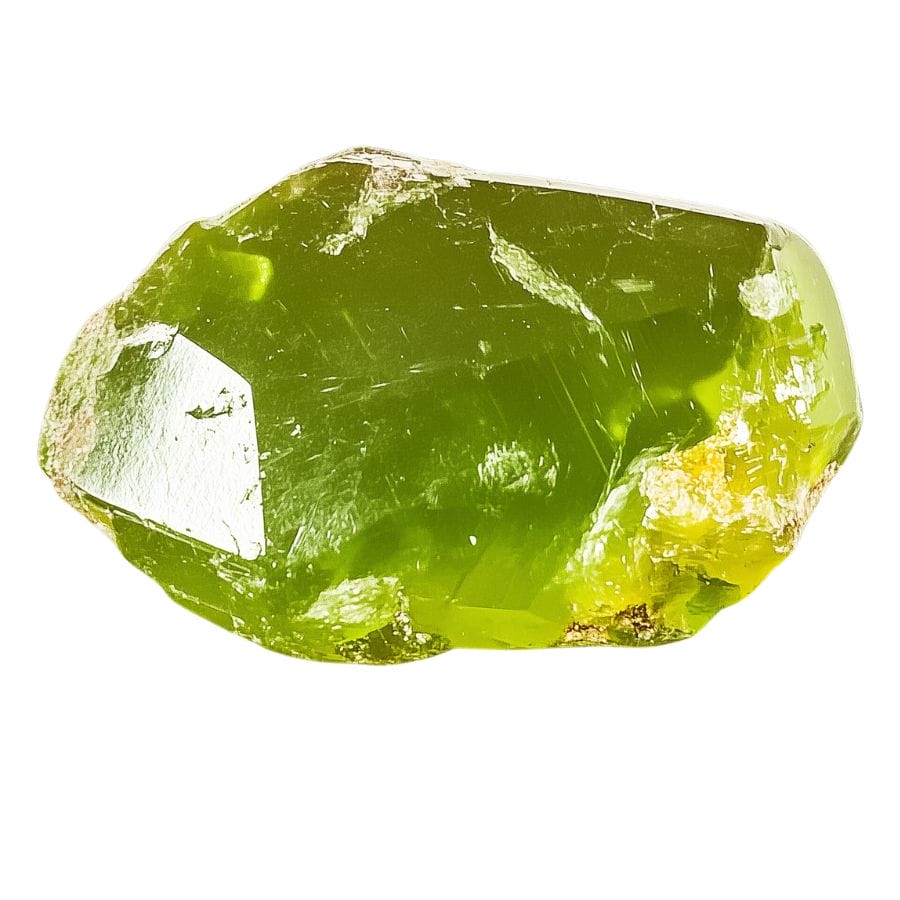
Antarctica Peridot usually comes in smaller sizes, but each stone packs a lot of sparkle. They show a pure green color that can look slightly yellowish or olive in different lights.
These stones formed under extreme cold conditions, which affects how they look. They tend to be very clear with few internal markings. Most pieces are under two carats in size.
The extreme conditions where these stones formed make them special. They had to survive intense pressure and cold temperatures to reach the surface.
These stones are among the rarest peridots because they’re so hard to find. Their small size actually helps them sparkle more intensely than larger stones.
Hawaii Peridot
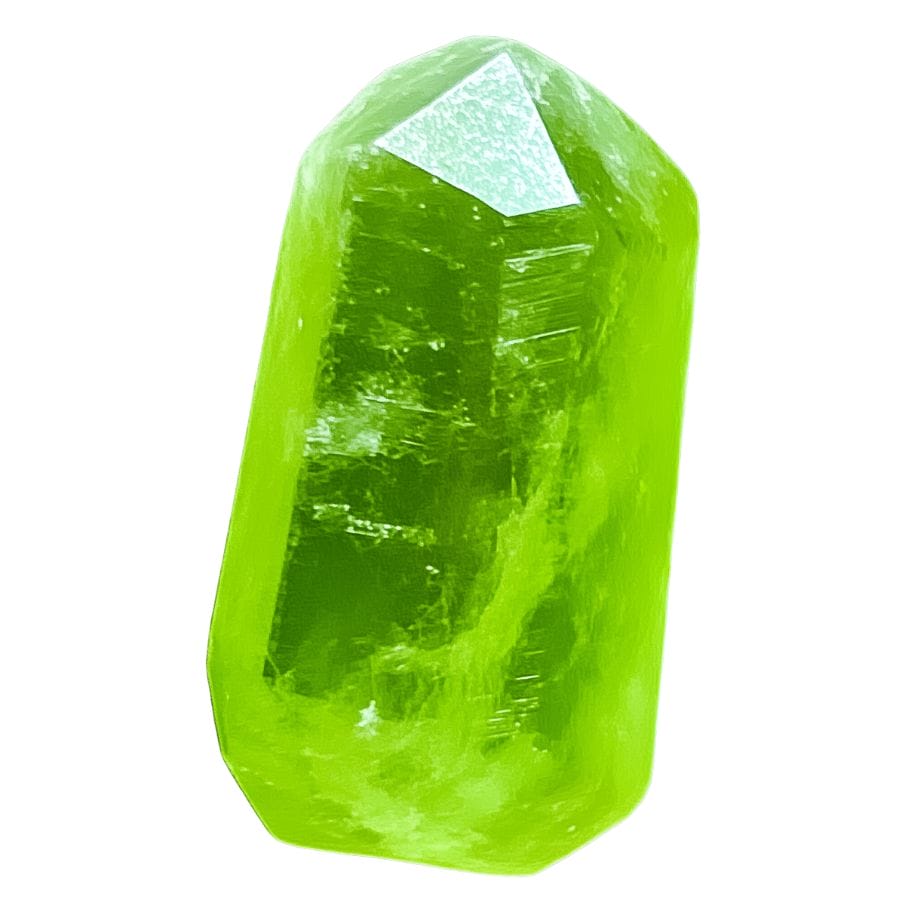
Hawaii Peridot has a rich olive-green color. Inside many stones, you can find special bubble-shaped marks called “lily pads.” These marks look like tiny round discs frozen in the stone.
One cool thing about these stones is that some of them contain tiny bits of gas trapped inside from when they formed. Scientists can study these bubbles to learn about conditions deep in the Earth.
In Hawaiian culture, peridot is associated with Pele, the goddess of fire and volcanoes, which adds to its allure among collectors interested in cultural artifacts.
New Mexico Peridot
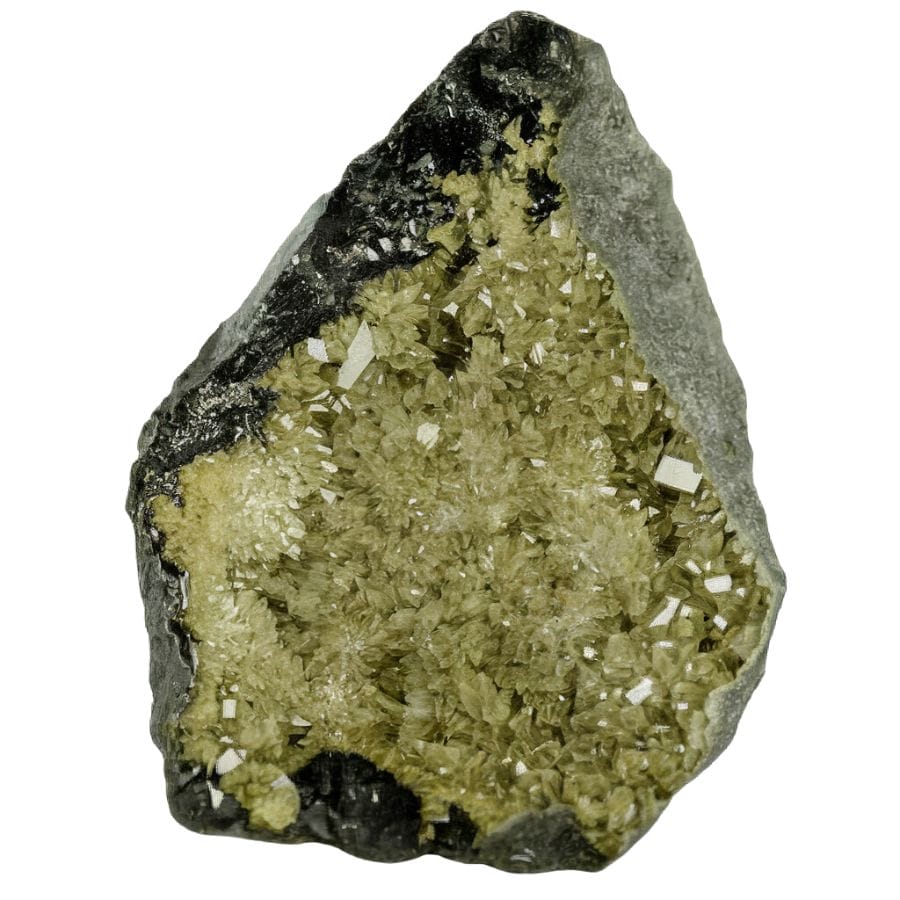
New Mexico peridot typically ranges in color from brown and greenish-brown to yellowish-green and the more desirable green hue. This variety stands out due to its potential for a wider color range compared to peridot from other regions.
One notable aspect of New Mexico peridot is its occurrence in volcanic debris from ancient eruptions, specifically from a 180,000-year-old volcano. This geological background contributes to the unique properties of the stones found there.
The Kilbourne Hole area is particularly noted for producing high-quality peridot that is sometimes considered superior to that from Arizona.
What Rough Peridot Looks Like
Peridot has several distinctive characteristics that can help you identify it in its natural form. These are the key features to look for.
You also want to make sure you know what else you’re looking at. Many rockhounds don’t really know what they’re finding and tossing away.
If you want REAL results finding incredible rocks and minerals you need one of these 👇👇👇
Finding the coolest rocks in isn’t luck, it's knowing what to look for. Thousands of your fellow rock hunters are already carrying Rock Chasing field guides. Maybe it's time you joined the community.
Lightweight, mud-proof, and packed with clear photos, it’s become the go-to tool for anyone interested discovering what’s hidden under our red dirt and what they've already found.
Join them, and make your next rockhounding trip actually pay off.
What makes it different:
- 📍 Find and identify 140 incredible crystals, rocks, gemstones, minerals, and geodes across the USA
- 🚙 Field-tested across America's rivers, ranchlands, mountains, and roadcuts
- 📘 Heavy duty laminated pages resist dust, sweat, and water
- 🧠 Zero fluff — just clear visuals and straight-to-the-point info
- ⭐ Rated 4.8★ by real collectors who actually use it in the field
Check for a glassy or waxy luster
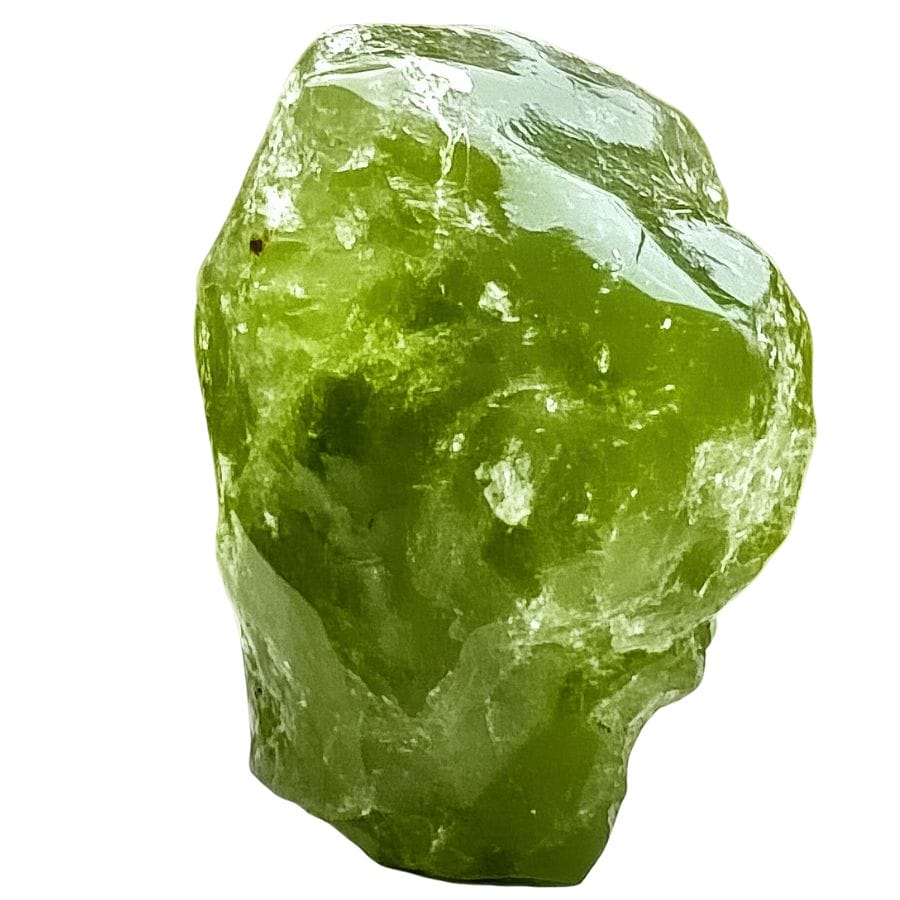
Raw peridot typically shows a distinct glassy to waxy shine, even in its unpolished state. When you shine a light on it, you’ll notice it’s not quite as sparkly as quartz but definitely shinier than most common rocks.
Pro tip: if it looks kind of like olive oil frozen in stone form, you might be onto something!
Look for that signature olive-green color
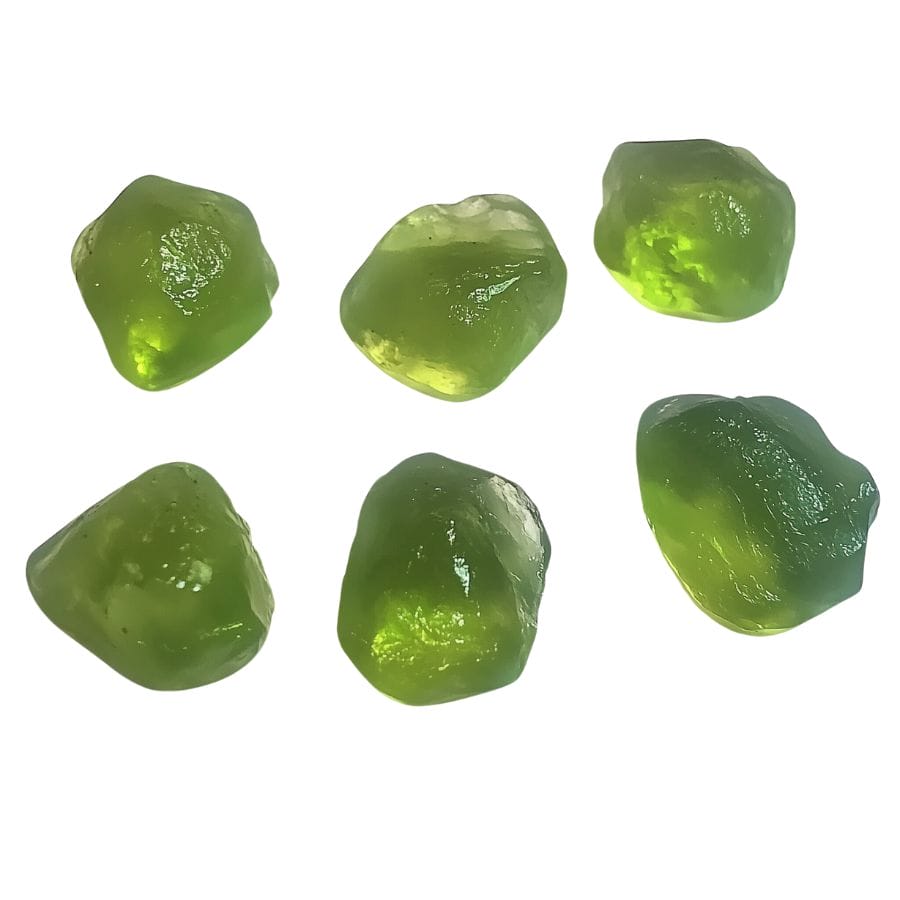
Unlike other green stones, peridot has this unique yellowish-green to olive-green color that’s pretty consistent throughout the stone.
Here’s the thing – even when rough, it shouldn’t have dark spots or zones. If you spot patches of brown or black, you’re probably looking at something else.
Hold it up to natural light – a genuine peridot will show that characteristic color even in its rough form.
Examine the crystal structure
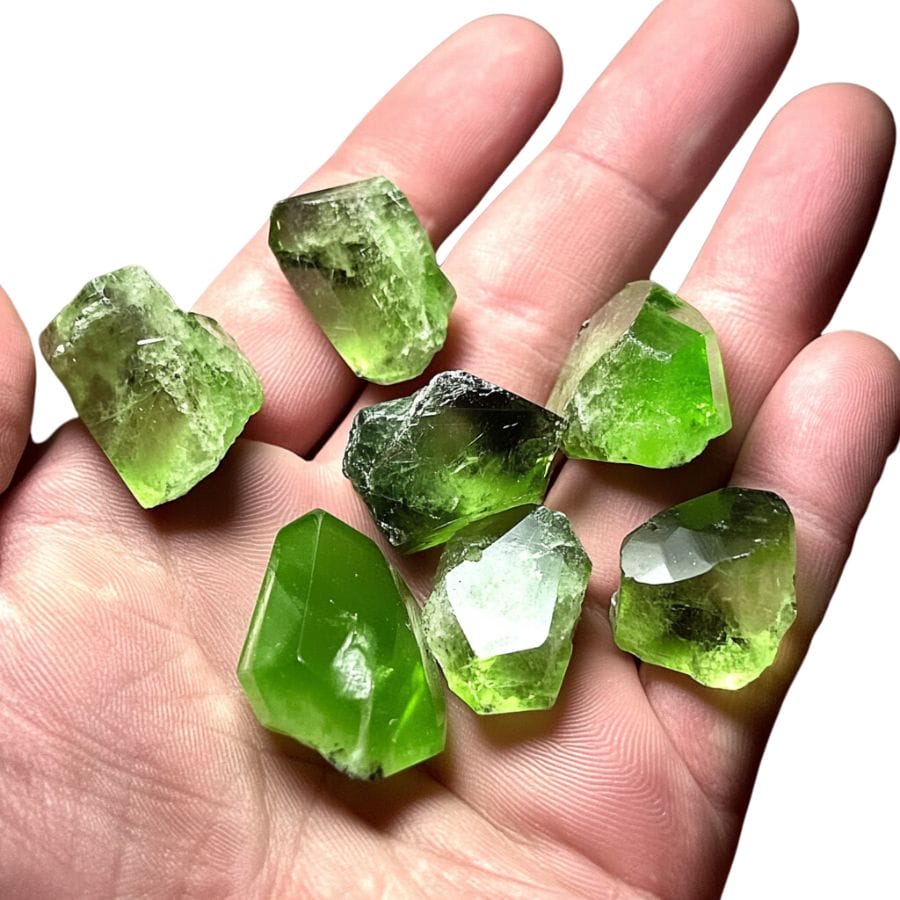
In its natural state, peridot forms stubby, prismatic crystals. Look for somewhat rectangular or barrel-shaped formations – they might be rough, but you should see hints of this shape.
Sometimes you’ll spot these crystals embedded in darker volcanic rock (that’s basalt, by the way). The surfaces might look a bit pitted or weathered, but they shouldn’t be perfectly smooth.
A Quick Request About Collecting
Always Confirm Access and Collection Rules!
Before heading out to any of the locations on our list you need to confirm access requirements and collection rules for both public and private locations directly with the location. We haven’t personally verified every location and the access requirements and collection rules often change without notice.
Many of the locations we mention will not allow collecting but are still great places for those who love to find beautiful rocks and minerals in the wild without keeping them. We also can’t guarantee you will find anything in these locations since they are constantly changing.
Always get updated information directly from the source ahead of time to ensure responsible rockhounding. If you want even more current options it’s always a good idea to contact local rock and mineral clubs and groups
Tips on Where to Look
Peridot typically forms in volcanic areas and can be found in several accessible locations. Here’s where you should start looking:
Volcanic Rock Formations
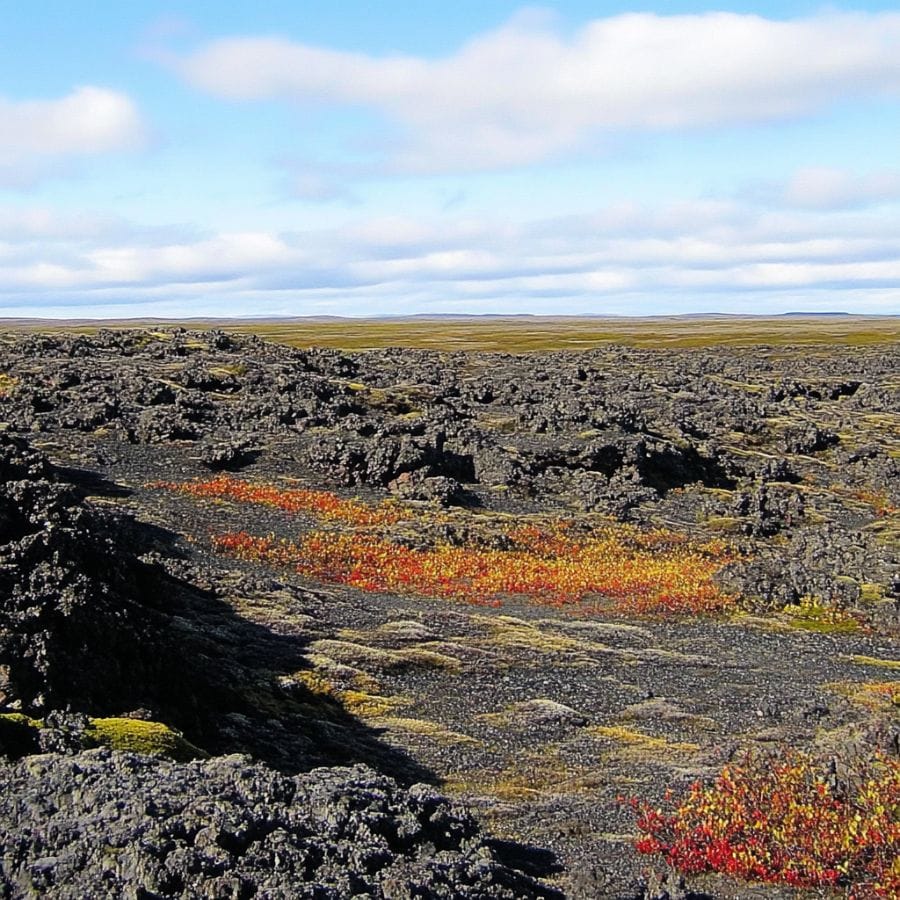
Look for dark-colored basalt rocks and olivine-rich formations. Check areas where ancient lava flows have created large rock deposits, especially those with visible green crystals embedded in the rock. These rocks often weather over time, exposing the peridot crystals.
Stream Beds and Gravel Banks
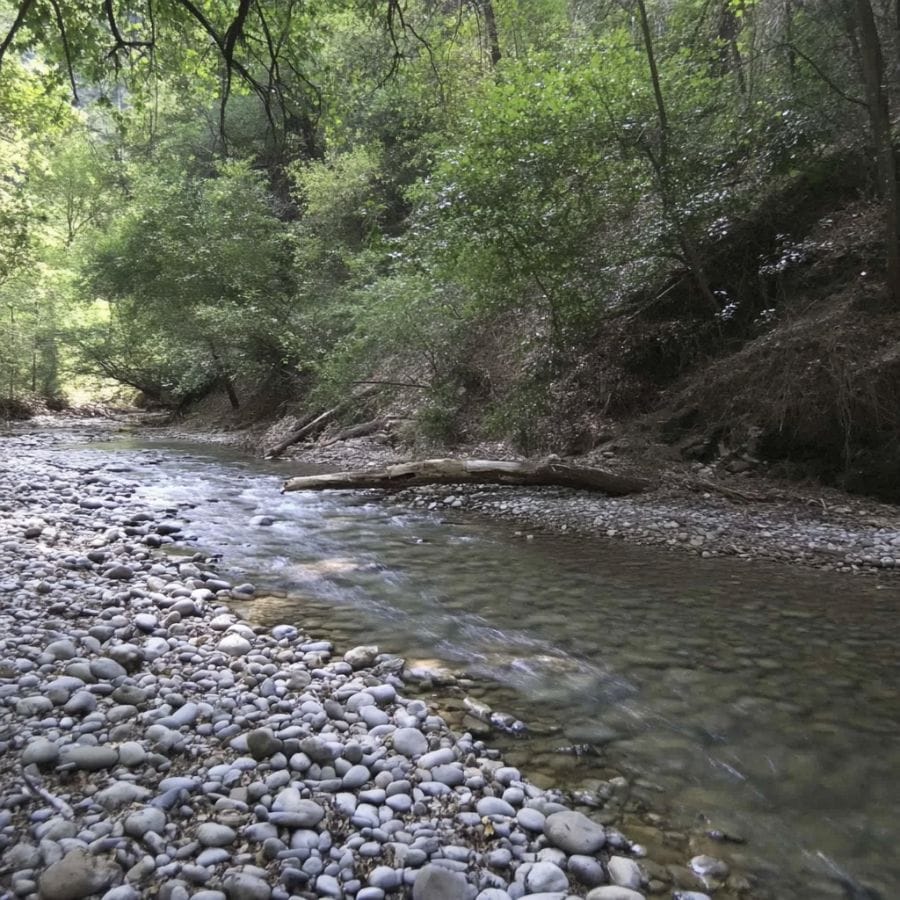
Search in stream beds where water has naturally broken down volcanic rocks. Peridot is usually more concentrated in these areas because water carries away lighter materials while leaving behind heavier minerals.
This makes it easier to spot the olive-green crystals among the gravels and sands that have accumulated over time.
Old Mining Areas
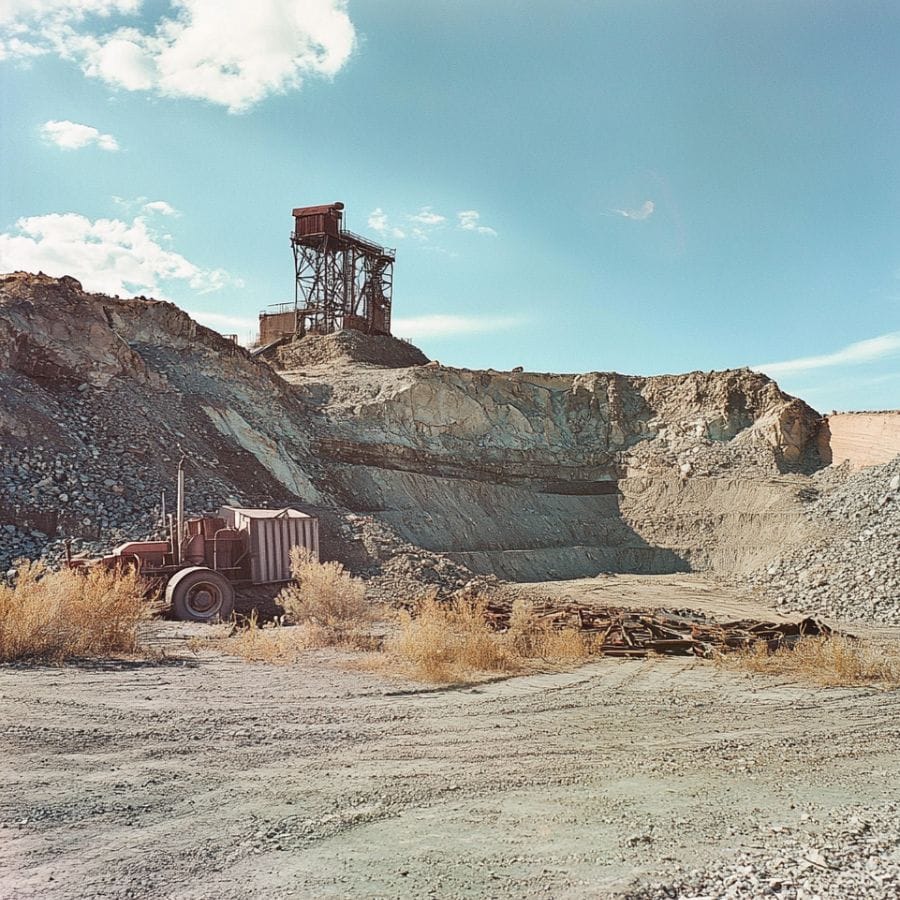
Visit abandoned mine dumps and tailings, particularly those known for copper or nickel mining operations that were active in volcanic regions.
These areas often contain peridot as a secondary mineral, and since the rock has already been broken down during previous mining operations, the gems are easier to spot.
The types of Peridot you can find around the state
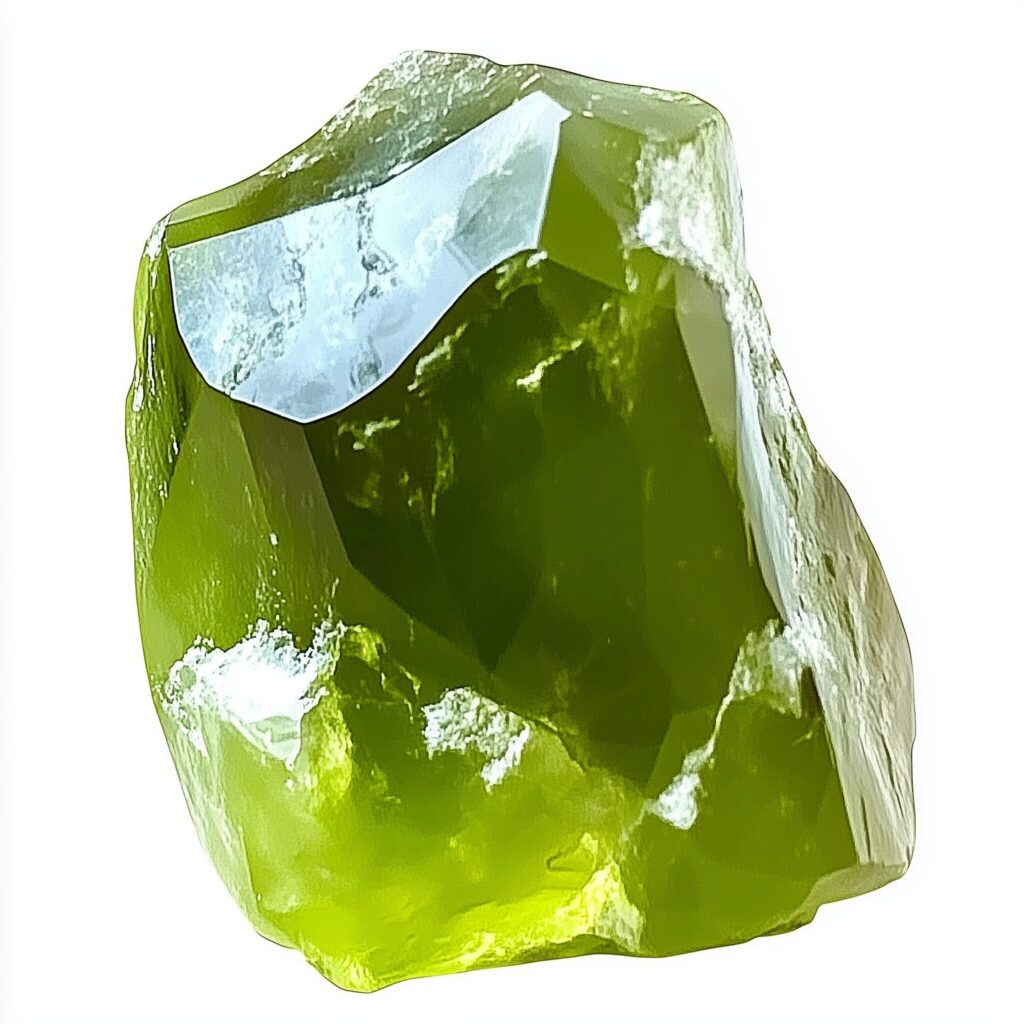
The peridot gems you can find in Vermont are super special – they’re usually a bright, lime-green color that really catches your eye! While most Vermont peridot looks like tiny pieces of bright green glass, sometimes you might find ones that are more olive-colored, like the color of green olives you’d see in the grocery store.
When you find peridot in Vermont, you’ll notice how clear and clean they look – kind of like tiny green windows you can see right through. These sparkly green gems are so clear and pretty that collectors love to add them to their collections.
Some Great Places To Start
Here are some of the better places in the state to start looking for peridot:
Always Confirm Access and Collection Rules!
Before heading out to any of the locations on our list you need to confirm access requirements and collection rules for both public and private locations directly with the location. We haven’t personally verified every location and the access requirements and collection rules often change without notice.
Many of the locations we mention will not allow collecting but are still great places for those who love to find beautiful rocks and minerals in the wild without keeping them. We also can’t guarantee you will find anything in these locations since they are constantly changing.
Always get updated information directly from the source ahead of time to ensure responsible rockhounding. If you want even more current options it’s always a good idea to contact local rock and mineral clubs and groups
Near Middlebury
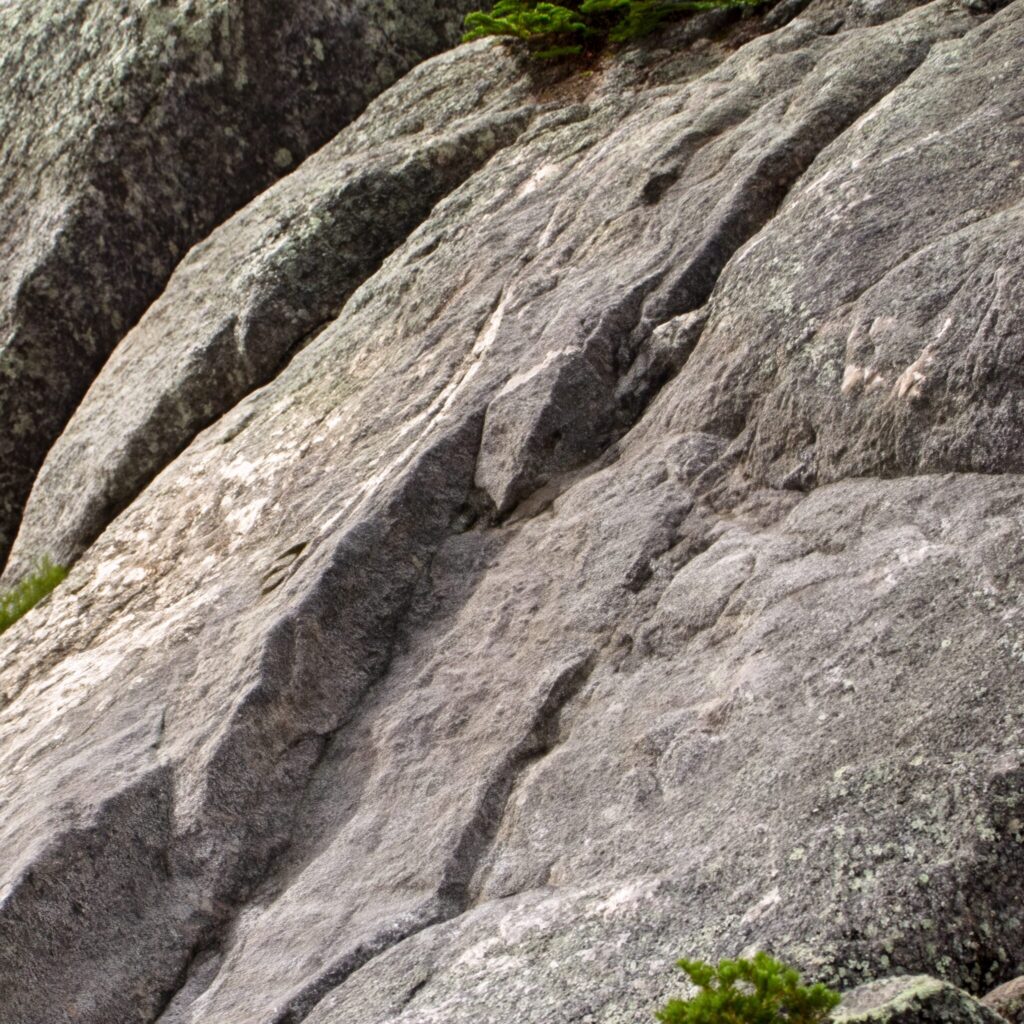
Near Middlebury, Vermont, offers a great opportunity for peridot hunters to search along the region’s rocky slopes and streambeds. The area’s rich geological history and varied terrain provide an ideal setting for uncovering these bright green gems.
Want to know the best spots to look? Check out the places where streams flow – especially where you can see lots of rocks and pebbles. Here’s a cool trick: go hunting right after it rains! The rain washes away dirt and sand, and sometimes new peridot gems pop into view.
Near Shaftsbury
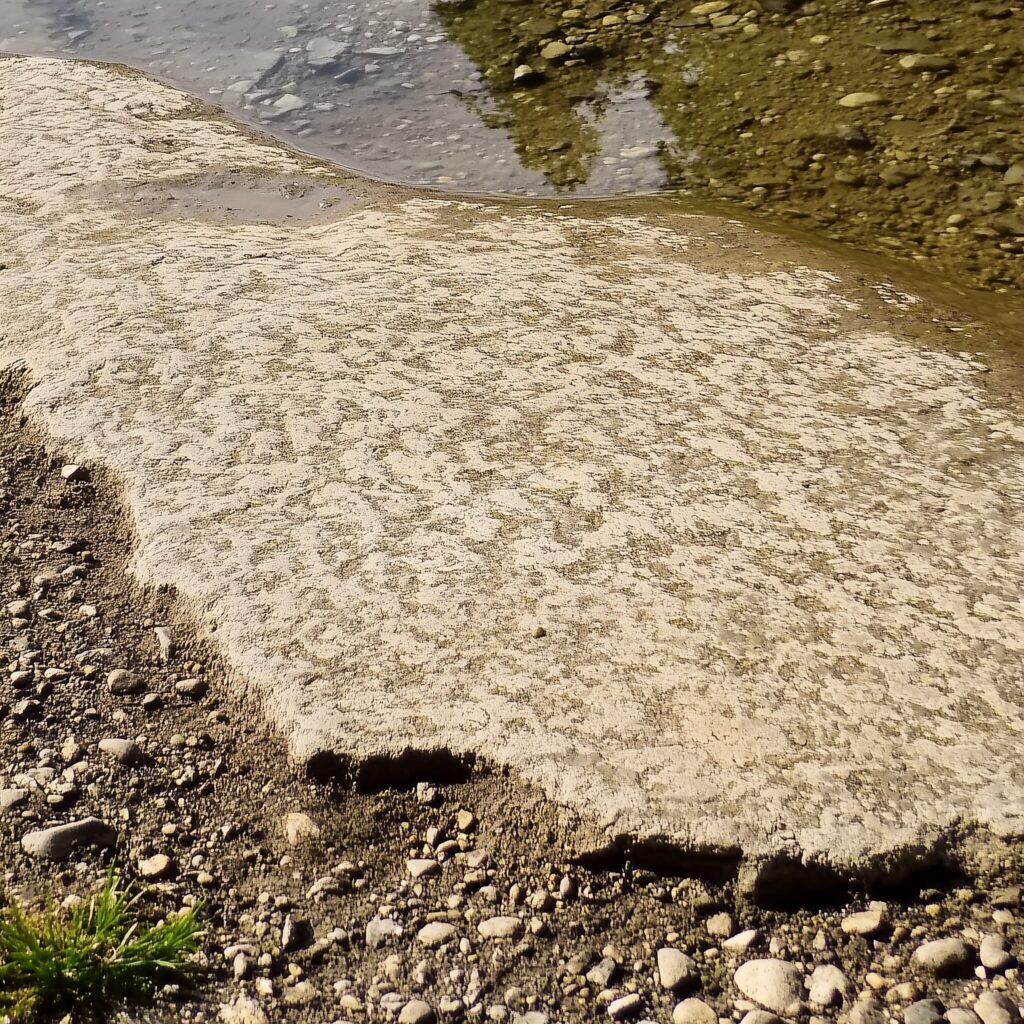
Shaftsbury, Vermont, is a special area that has lots of big rocks sticking out of the ground and rich soil that’s perfect for hiding these pretty green gems. You can explore creek areas and forests nearby, where peridot has been waiting to be discovered for hundreds of years.
Look closely at places where streams have carved paths through the land, and check out the old cliff faces where rocks are crumbling away. Bring a small brush to gently sweep away dirt from interesting rocks. Just remember to be gentle with the land and only take home the gems you find loose on the ground.
Near Woodford
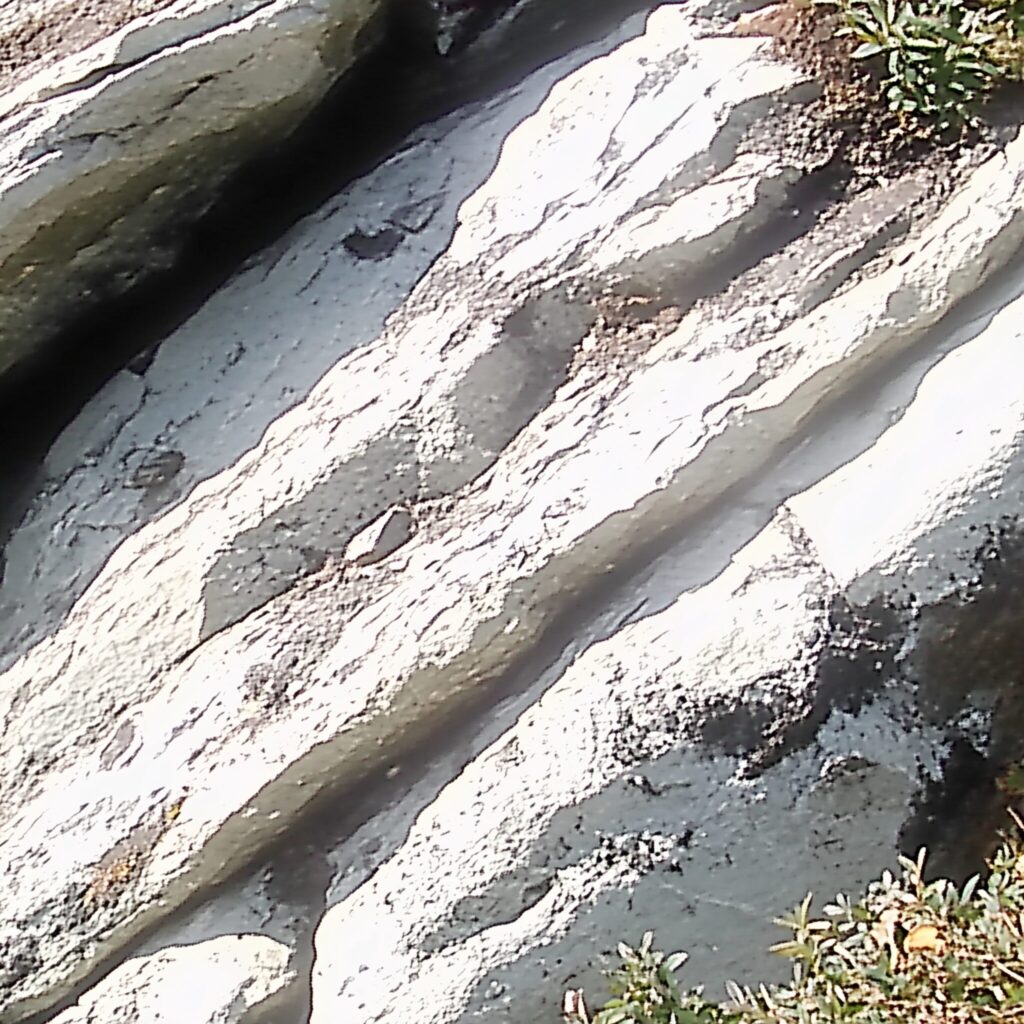
Did you know Woodford, Vermont, is like a secret treasure map for finding peridot? Long ago, rivers flowed through here and left behind special places where these bright green gems might be hiding today.
Try looking for peridot in places where little streams flow, or where you see piles of loose rocks. Another cool spot to search is where the forest meets the hills – sometimes the soil here slowly wears away and reveals peridot. Make sure to bring a small bag to carry your treasures home!
Near St. Johnsbury
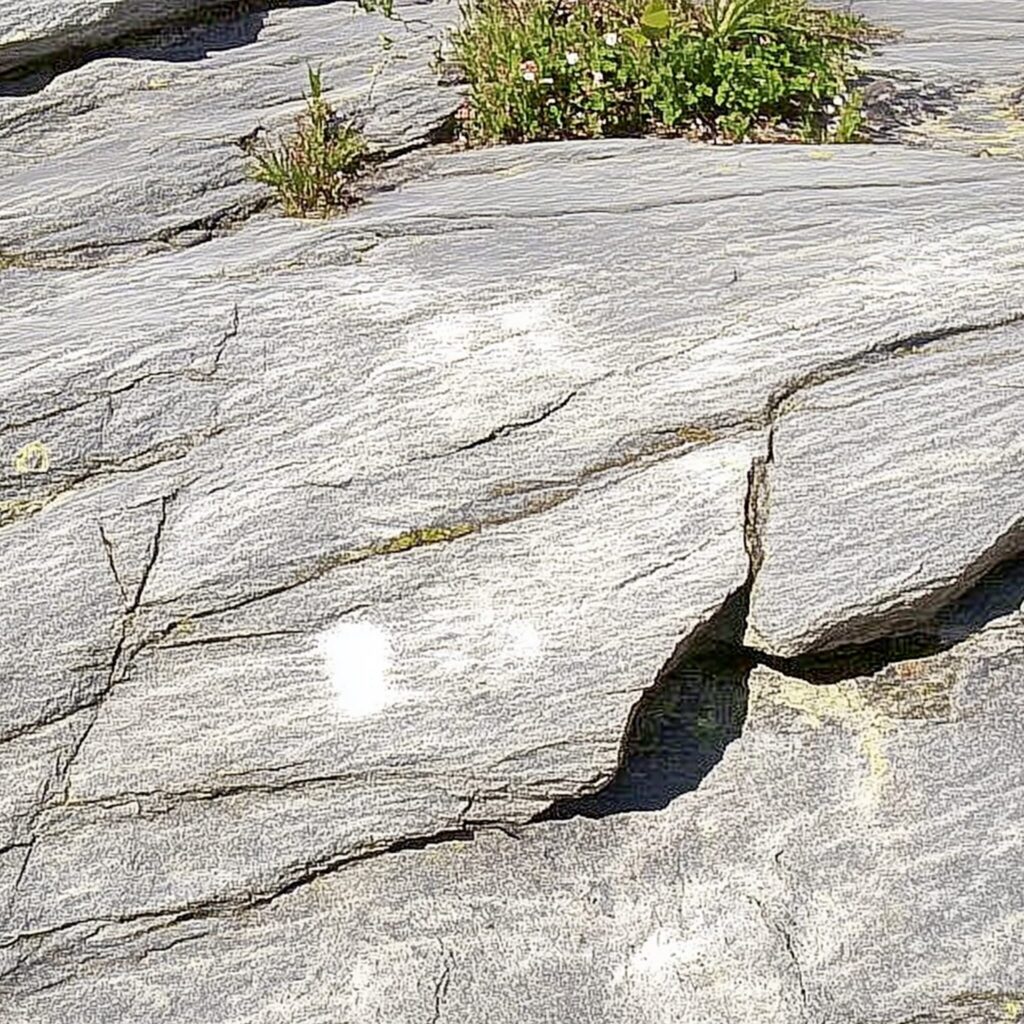
Near St. Johnsbury, Vermont, you’ll find a mix of forests and rugged landscapes that can hide peridot crystals among the rocks. This area, with its ancient volcanic formations and nearby streams, creates a perfect environment for peridot to form.
For the best results, focus on searching along creek beds and near rocky hillsides where the earth has been weathered by time. Look for areas where erosion has exposed the rocks, as these spots are often where peridot crystals are most likely to be uncovered.
Near Colchester
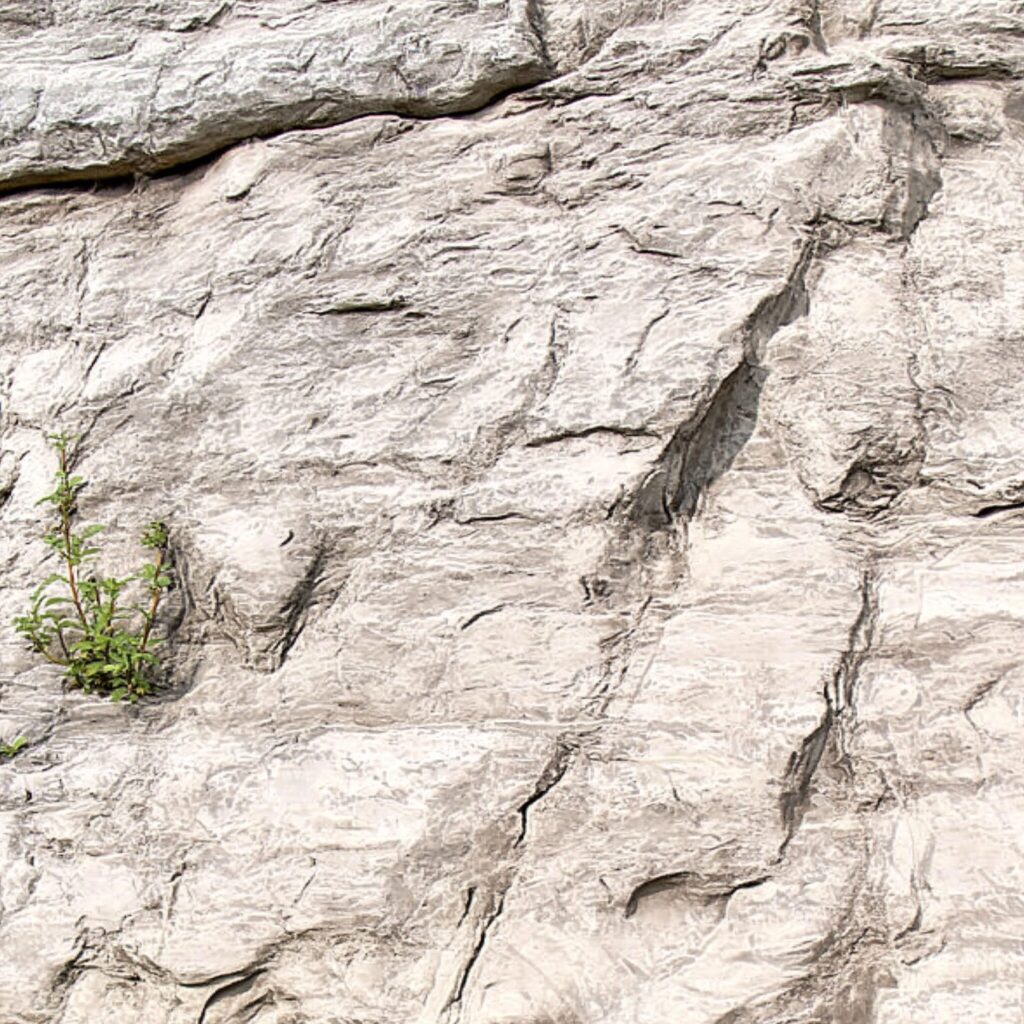
The Colchester, Vermont, sits right next to Lake Champlain and has forests filled with cool rocks and minerals. It’s like nature made a perfect hiding spot for peridot gems in this area!
One of the best places to look is along Lake Champlain’s rocky shore. The lake’s waves have been washing against the rocks for thousands of years, helping to uncover these sparkly green treasures. You can also explore the high spots where rocks stick out of the ground.
Places Peridot has been found by County
After discussing our top picks, we wanted to discuss the other places on our list. Below is a list of the additional locations where we have succeeded, along with a breakdown of each place by county.
| County | Location |
| Addison | Near Cornwall |
| Chittenden | Near Williston |
| Chittenden | Near Essex |
| Essex | Near Richford |
| Essex | Near Lamoille |
| Franklin | Near St. Albans |
| Franklin | Near Fairfield |
| Franklin | Near Highgate |
| Grand Isle | Near North Hero |
| Grand Isle | Near South Hero |
| Lamoille | Near Morristown |
| Lamoille | Near Jeffersonville |
| Lamoille | Near Cambridge |
| Orange | Near Barre |
| Orleans | Near Newport |
| Orleans | Near Derby |
| Orleans | Near Coventry |
| Rutland | Near Castleton |
| Rutland | Near Poultney |
| Rutland | Near Proctor |
| Washington | Near Montpelier |
| Washington | Near Middlesex |
| Washington | Near East Montpelier |
| Windham | Near Brattleboro |
| Windham | Near Dummerston |
| Windham | Near Putney |
| Windsor | Near Hartford |
| Windsor | Near Windsor |
| Windsor | Near Reading |
| Windsor | Near Weathersfield |
| Windsor | Near Ascutney |
| Windsor | Near Quechee |
| Windsor | Near Brownsville |

